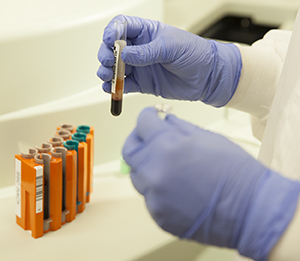When Your Child Has Anemia
Anemia occurs when there are not enough healthy red blood cells (RBCs) in the body. RBCs are important because they contain hemoglobin. Hemoglobin is a protein that allows RBCs to carry oxygen throughout the body. Mild anemia can cause your child to feel tired or have less energy than normal. Severe anemia can cause many health problems. It can also affect how your child grows. Talk to your child’s healthcare provider about treatment options.
What causes anemia?
Anemia has many causes, including:
-
Not enough RBCs being made
-
Too many RBCs being destroyed (hemolysis)
-
Blood loss (from things like injury or surgery or menstrual bleeding)
-
Inherited blood disorders
What are the symptoms of anemia?
Some children have no symptoms at all. If symptoms are present, they may include:
-
Pale skin
-
Crankiness
-
Weakness
-
Extreme tiredness (fatigue)
-
Shortness of breath
-
Trouble doing normal amounts of physical activity (exercise intolerance)
-
Rapid heartbeat
-
Dizziness or fainting
-
Yellowing of the eyes, skin, or mouth, and dark, tea-colored urine (jaundice) in certain types of anemia
How is anemia diagnosed?
 |
| Blood tests are done to check the health of blood cells. |
Your child’s healthcare provider will examine your child. They will also ask about your child’s symptoms, diet, and health history. Tests will be done. Most of the tests are done by taking a blood sample from a vein in the arm or from a finger or heel. Tests may include:
-
A complete blood cell count (CBC). This is done to measure the amounts of different types of cells in the blood. When diagnosing anemia, gathering information about the RBCs is particularly important.
-
Blood smear. This checks the size and shape of blood cells. A drop of blood is looked at under a microscope. A stain is added to make parts of the blood easier to see.
-
Hemoglobin electrophoresis. This checks for the amounts and types of hemoglobin in the blood.
-
Iron studies. These tests measure the amount of iron in the blood. Iron is needed to make hemoglobin, so too little iron can lead to anemia.
-
Reticulocyte count. This measures the amount of new RBCs being made by the bone marrow.
-
Bone marrow biopsy. In some cases this is done if there is no clear cause of anemia. A needle is placed into the bone to draw out some of the fluid inside.
How is anemia treated?
Treatment for your child’s anemia depends on the type, cause, and severity of symptoms. Treatment can include:
-
Diet changes. Certain nutrients can affect the RBCs. For instance, iron is needed to help build RBCs. If lack of iron is the cause of your child’s anemia, you’ll be told to increase the amount in your child’s diet. Other nutrients can be involved with anemia as well, including low amounts of folate and vitamin B-12. Sometimes these nutrients require replacement in the form of supplements or medication (iron pill or vitamin B-12 shot).
-
Medicines. These may be prescribed to treat an underlying cause of your child’s anemia.
-
Blood transfusions. These are needed if the level of hemoglobin or number of RBCs is low enough to cause serious physical symptoms.
-
Surgery to remove the spleen (splenectomy). This is a treatment for certain types of anemia. The spleen stores extra blood and helps remove old RBCs from the body. This surgery is done rarely for some severe forms of anemia.
-
Bone marrow transplant. In extremely rare cases, this treatment is done if the body can’t make enough healthy blood cells. It replaces diseased bone marrow cells with healthy cells from a matched donor.
What are the long-term concerns?
-
Most children recover from anemia without any long-term effects.
-
For some children, anemia may be a lifelong condition. In mild to moderate cases, regular visits with the healthcare provider are needed for routine tests and help in managing symptoms.
-
In severe cases, children will need ongoing treatment and supportive care. Work closely with your child’s healthcare provider to learn all you can about your child’s condition and how to help your child.
© 2000-2025 The StayWell Company, LLC. All rights reserved. This information is not intended as a substitute for professional medical care. Always follow your healthcare professional's instructions.